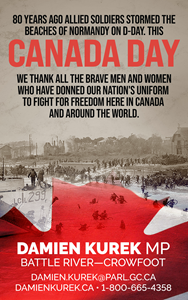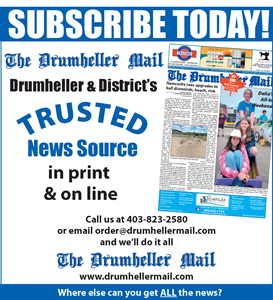
Drumheller Town Council is gauging the future of public transportation in the valley, and if it is time to expand the service.
Council has a final draft of The Town of Drumheller Transit Feasibility Study prepared by iTrans. Its goal is to assess the current services provided by the Valley Bus Society, and the opportunity to introduce fixed route services. It examines the proposal in context of what other similar sized municipalities are able to offer.
The report says the reason for the study is as the demographics of the town change, and quality of life issues surface, more demands will be put on the Valley Bus Society, and indirectly on elected officials. The study is now needed to address long term solutions and a short term plan to achieve these solutions.
Currently the Valley Bus Society has an established criteria for those it serves, which includes those who are not able to drive, and those over 50 who are able to drive, but do not have access to an automobile. The bulk of its service is dial-a-bus fares followed by contracted services and charters. In 2008, it cost about $200,000 to operate the service with about 70 per cent of the funding going to labour. The Town of Drumheller supported the Valley Bus Society with about $50,000, plus in kind services valuing approximately $20,000. The rest of its funding came from service delivery, donations and fundraising, and advertising revenue.
Councillor Andrew Berdahl says it is time to decide whether the Valley Bus Society should expand its services, or to shrink back to its original mandate.
The recommendations include introducing a community bus route to the urban areas of Drumheller including Nacmine and Midland on alternate trips, as a service to all residents, operating during business hours.
It also recommends introducing a fixed route taxi service to serve the outlying communities from East Coulee to Drumheller. This would be a shared ride taxi service, typically a van, that would follow a fixed route and schedule, and stop only at designated points.
The report also recommends a taxi scrip program be assessed. This would provide eligible Valley Bus customers service during non Valley Bus hours of operation, and would subsidize fares. They would also have one wheelchair accessible vehicle dedicated to the demand responsive Valley Bus door-to-door service. Charter services such as out of town medical trips would continue to operate, at a cost not subsidized directly by the taxpayer.
The report recommends the governance model of the Valley Bus Society be divided into two. The Community Bus side would include accessible bus service, the fixed route shared taxi service and the possibility of tourism-focused transportation. The Specialized Transit side would offer specialized services, taxi scrip service and charter.
To achieve this, the study recommends Drumheller purchase a 25 seated passenger bus, provide funding for a taxi service to retrofit vehicle(s) to accommodate one wheel chair passenger for trips that cannot be accommodated by regular Valley Bus service, purchase dispatching software and install bus stops.
Berdahl says according to the models it appears the existing service can be maintained, while adding much more public services without a significant increase of cost.
Offering public service could open up more revenue streams to support the service in the form of grants. The spin off of operating tourist-centred services could also provide a new revenue stream.
Berdahl said the Valley Bus Society and council have been examining the issues addressed by the report for a number of years, but would like to see it addressed by council in the near future.
















